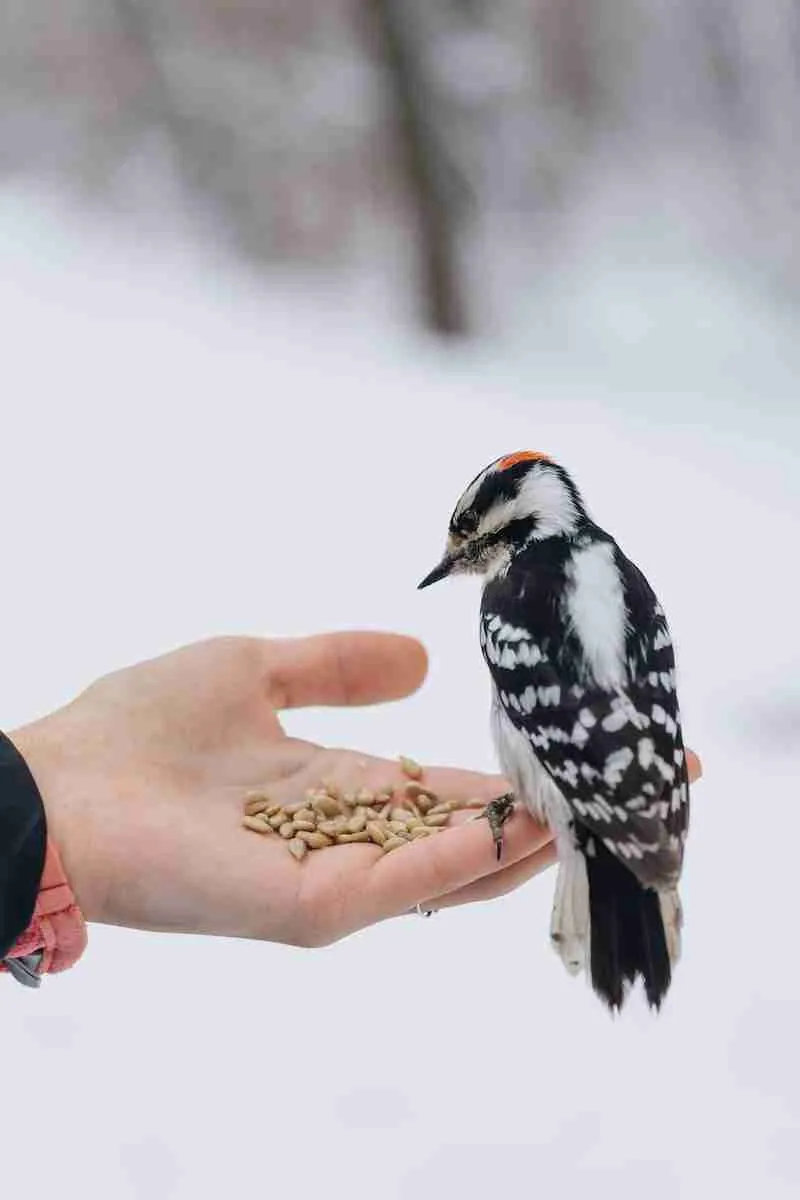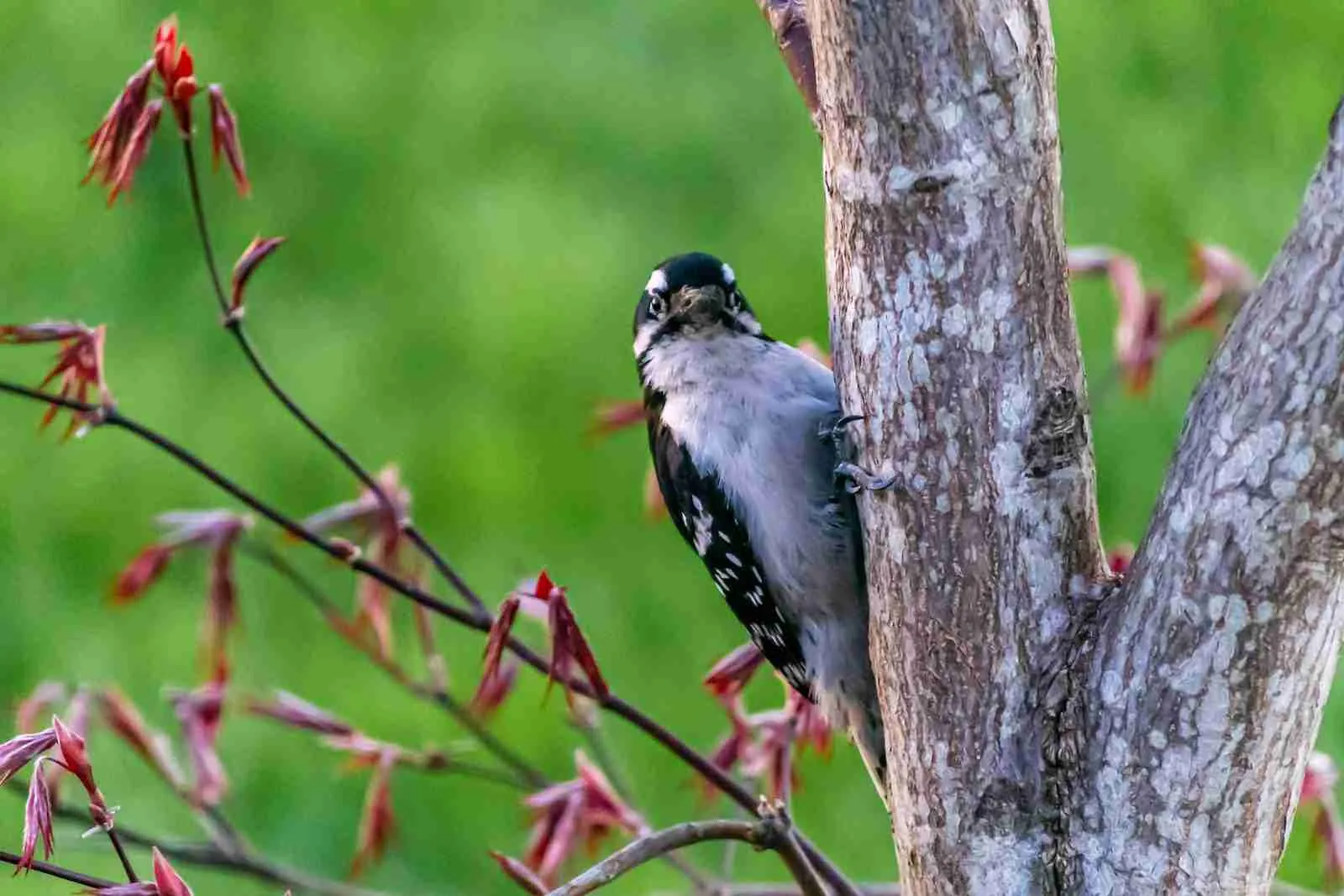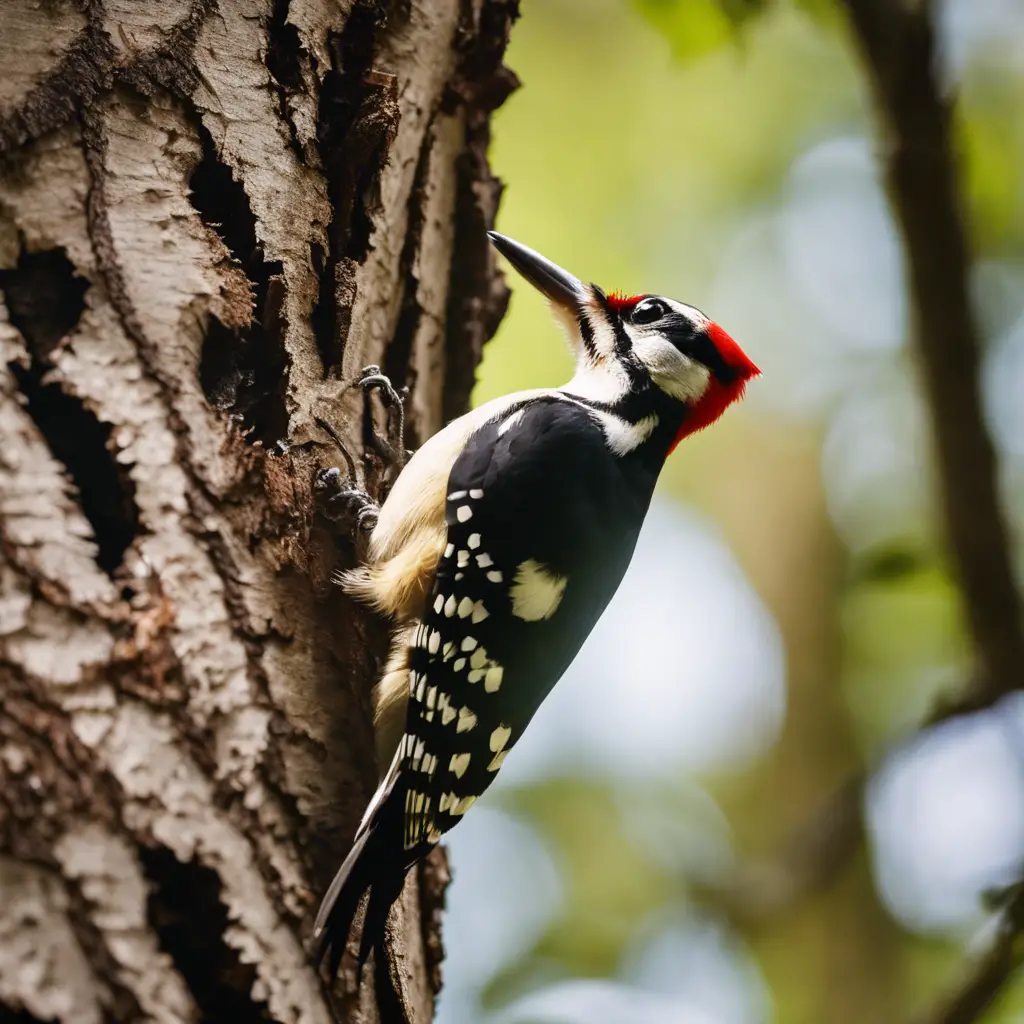I remember the first time I witnessed a woodpecker at work, the rhythmic tapping resonated through the forest.
In my experience as an ornithologist, I’ve spent countless hours studying these remarkable creatures. I believe the woodpecker’s ability to hammer into wood at a blistering 20 times per second is one of nature’s most fascinating spectacles.
With every drumming session, I’m reminded of the perfection of their evolutionary design. Their robust beaks and built-in shock absorbers are marvels of biology that underscore my appreciation for forest ecology and the unique roles each creature plays within it.
Key Takeaways
- Woodpeckers can peck at speeds up to 13-15 mph, allowing for rapid hole creation.
- Specialized adaptations in the woodpecker’s skull, beak, and neck protect the bird from brain damage during intense pecking.
- The force generated by a woodpecker’s peck is 1,200 times the force of gravity, enabling them to penetrate into trees.
- Understanding woodpecker behaviors and ecological impact can provide insights into the species’ roles in ecosystems.
Woodpecker Pecking Mechanics
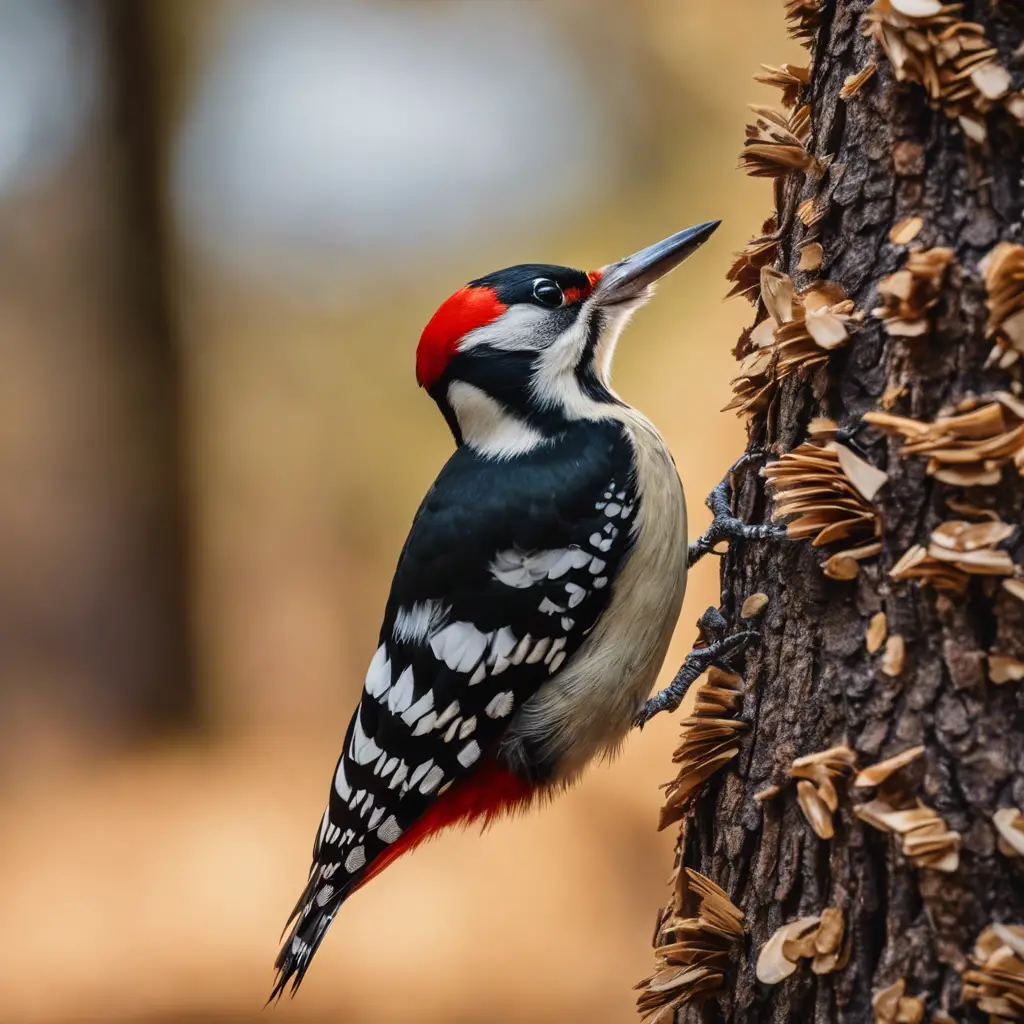
Understanding the mechanics of a woodpecker’s peck reveals a symphony of biological engineering. Each rapid strike, reaching speeds up to 13-15 mph, is cushioned by a shock-absorbing hyoid bone, preventing brain damage. This intricate system allows woodpeckers to drill holes with remarkable precision and speed, up to 20 pecks per second, as reported by the Cornell Lab of Ornithology.
Their muscular necks and specialized beaks converge in a harmonious action, optimized for excavating wood. As they hammer away, the zygodactyl configuration of their feet anchors them firmly, dispersing kinetic energy and lending stability.
Additionally, the woodpecker’s tongue plays a crucial role. Equipped with barbs and coated in sticky saliva, it deftly retrieves insects from the crevices of their freshly drilled holes.
Factors Influencing Speed
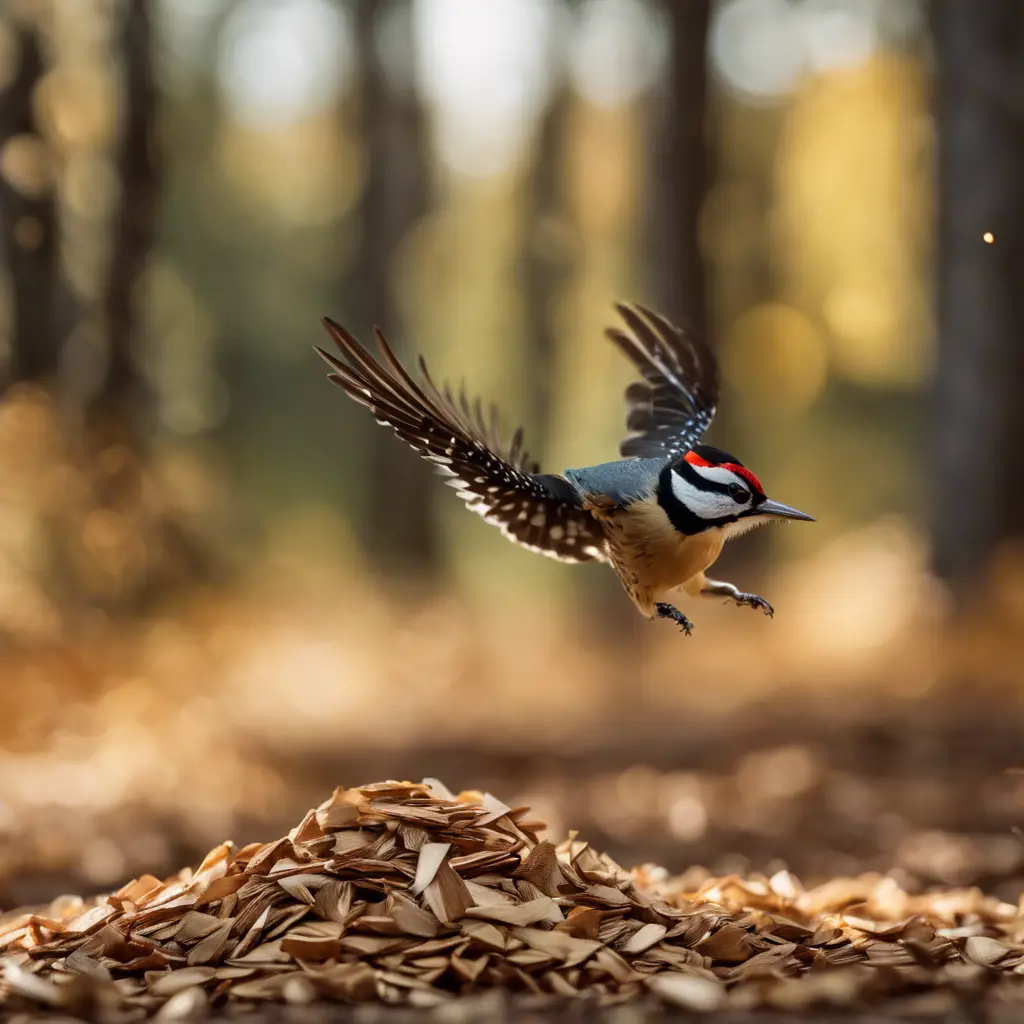
The rapid pecking speed of woodpeckers is largely attributed to their specialized neck muscles, which provide the necessary strength and stability for quick and efficient hole excavation. These birds have evolved to create holes in trees not just for foraging but also as a means to access their food source. For instance, the yellow-bellied sapsucker taps into trees to feed on sap, while others hunt for wood-boring insects.
| Factor | Influence on Speed |
|---|---|
| Beak Design | Efficient energy transfer |
| Posture | Force distribution |
| Skull Protection | Prevents brain damage |
The beak’s chiseling shape and shock-absorbing tissues, along with the woodpecker’s clinging posture, allow them to withstand the forces of rapid pecking. Moreover, the skull’s ability to absorb tremendous impacts enables relentless drilling without injury.
Protective Adaptations
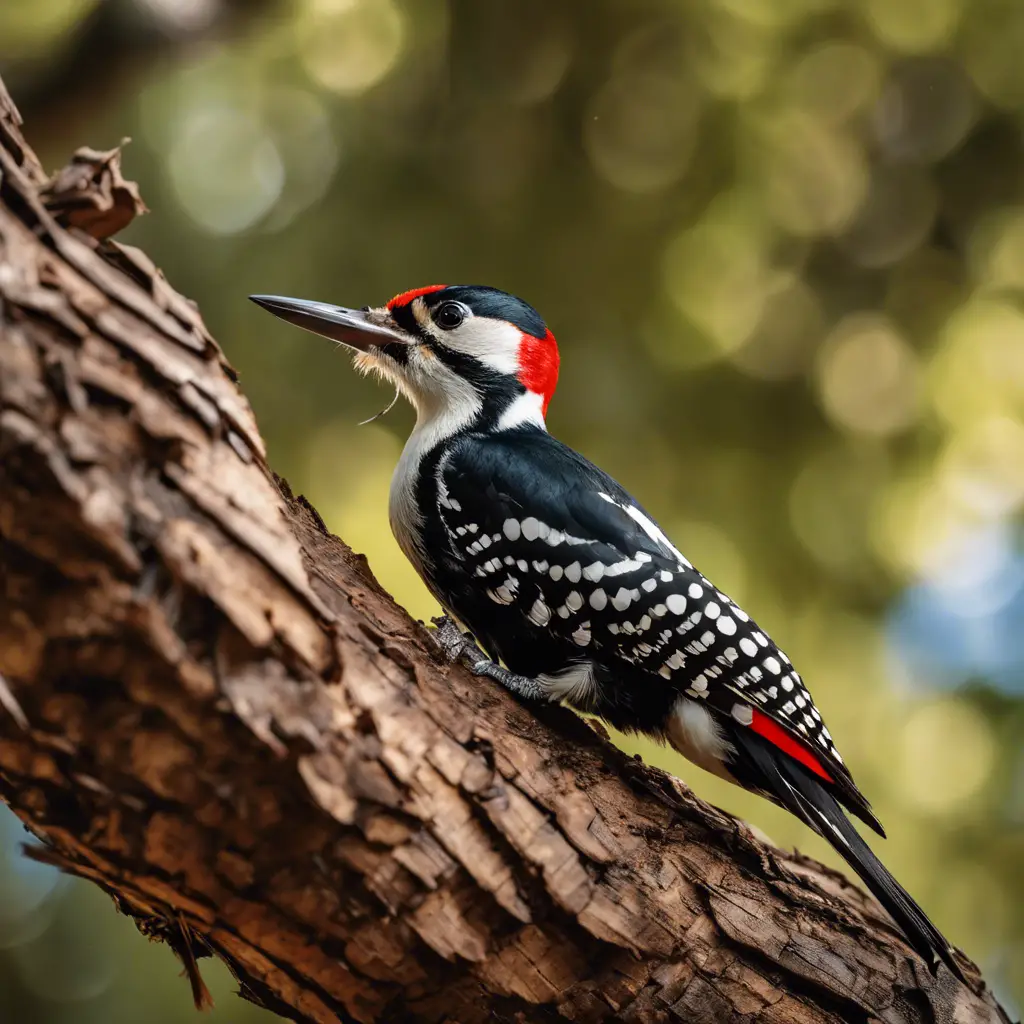
Pecking relentlessly at up to 20 times per second, woodpeckers rely on their skull’s unique adaptations, including a surrounding hyoid bone, to absorb the intense impact without harming their brains.
Their beak’s specialized shape and composition are honed to chip away at wood efficiently. When targeting healthy trees, the damage caused by woodpeckers is a testament to their robust protective adaptations.
They assume a vertical posture while pecking, which aligns the forces generated down their body, mitigating the risk of concussions.
These evolutionary traits are crucial not just for foraging and nesting in tree trunks but also for their overall survival.
Without such adaptations, the repeated trauma would deter woodpeckers from the very behavior that defines their ecological niche.
Observing Hole Creation
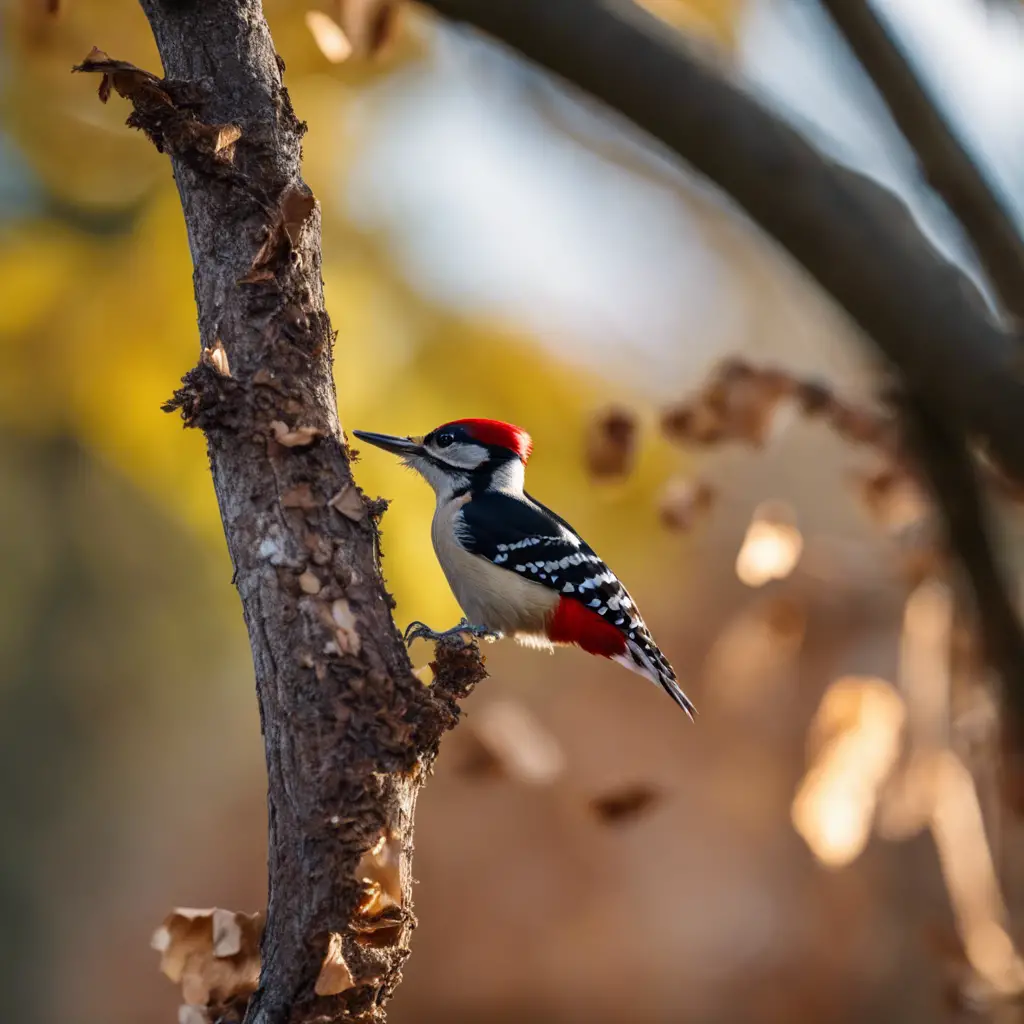
As you observe woodpeckers at work, note how their beaks and neck muscles coordinate to rapidly excavate wood, creating holes at a speed that can reach 22 miles per hour. This remarkable ability is a product of evolutionary specialization, allowing them to forage and nest with efficiency.
| Aspect of Observation | Detail | Significance |
|---|---|---|
| Pecking Speed | Up to 20 times/sec | Facilitates quick hole creation |
| Beak and Neck Design | Specialized for impact | Enables powerful pecking |
| Pecking Force | 1,200x force of gravity | Allows penetration into trees |
| Ecological Impact | Insight into foraging | Helps understand species behaviors |
A study found that observing hole creation by woodpeckers can yield deep insights into their behavior and ecological roles, emphasizing the importance of these avian craftsmen in their habitats.
Frequently Asked Questions
How Long Does It Take for a Woodpecker to Make a Hole in a Tree?
You’re wondering about the duration it takes for a woodpecker to create a cavity. Typically, it’s a few minutes to several hours, influenced by hole size and the wood’s hardness.
What Is the Speed of a Woodpecker?
You’re asking about woodpecker speed: they can peck 20 times per second with beak strikes reaching 15 mph, thanks to robust neck muscles and beak adaptations that prevent concussions during rapid pecking.
How Much Wood Can a Woodpecker Peck in a Day?
You can expect a woodpecker to peck around 12,000 times a day, but the volume of wood removed depends on the tree’s hardness and the woodpecker’s specific feeding or nesting requirements.
How Can Woodpeckers Peck so Fast?
You’re amazed at woodpeckers’ rapid pecking? It’s their specialized muscles, unique skull anatomy, and chisel-like beak that enable them to peck 20 times per second without injury.
Conclusion
In sum, woodpeckers combine rapid pecking with robust neck muscles to efficiently bore holes. However, the speed of hole creation varies, influenced by factors like tree hardness and individual vigor.
Their specialized cranial adaptations shield their brains during this intense activity. You’ll notice that observing these birds in action offers insight into their remarkable abilities, but remember that meticulous study is required to fully appreciate the nuances of their impressive excavation skills.

An avid ornithologist, zoologist and biologist with an unwavering passion for birds and wild animals.
Dr. Wilson’s journey in ornithology began in childhood and led him to obtain a Ph.D. in Ornithology from the prestigious Avian Research Institute. He has worked closely with renowned experts in the field and conducted extensive research and field studies globally.


